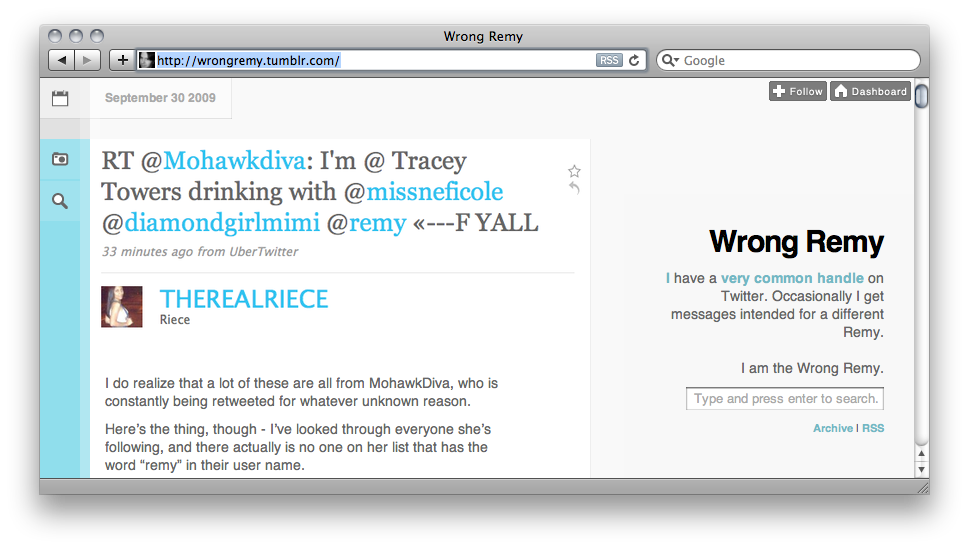
Like so many others, I have found Twitter a simultaneously fantastic and mind-numbing portion of the internet. For every good thing (extremely rapid notifications for breaking news, lots of good links from friends), there’s an equal and opposite bad thing (inane trending topics, spam bots). While most of these are universally shared, there’s one particular quirk that is not common.
Twitter makes it easy to reference other users – sticking an @ symbol in front of their name is considered a “mention” and most clients will flag this as relevant to the interests of those mentioned. This is theoretically good, but in practice a number of things become clear:
- With characters at a premium, many people can’t be bothered to type out full user names.
- Because a lot of people are using cell phones to post to Twitter, the habit of heavy SMS users to shorthand text continues here.
- Because a lot of people don’t understand how mentions work, they tend to throw @ symbols wherever they feel like, or spaces in the middle of user names.
What this adds up to: if you were on the Twitter train early enough to get what could be called a stem username – one that might be used at the beginning of other user names – you may be subjected to mentions not intended for you.
There are a lot of Remy’s on Twitter, and I get a lot of mentions for them. I’ve taken to answering them on a Tumblr blog devoted specifically to such endeavors.
Sighing frustration + helpful cheerfulness + Twitter anthropology = Wrong Remy. I hope you enjoy reading it as much as I enjoy writing it.
(This is one of two side projects I’ll be introducing this week.)


